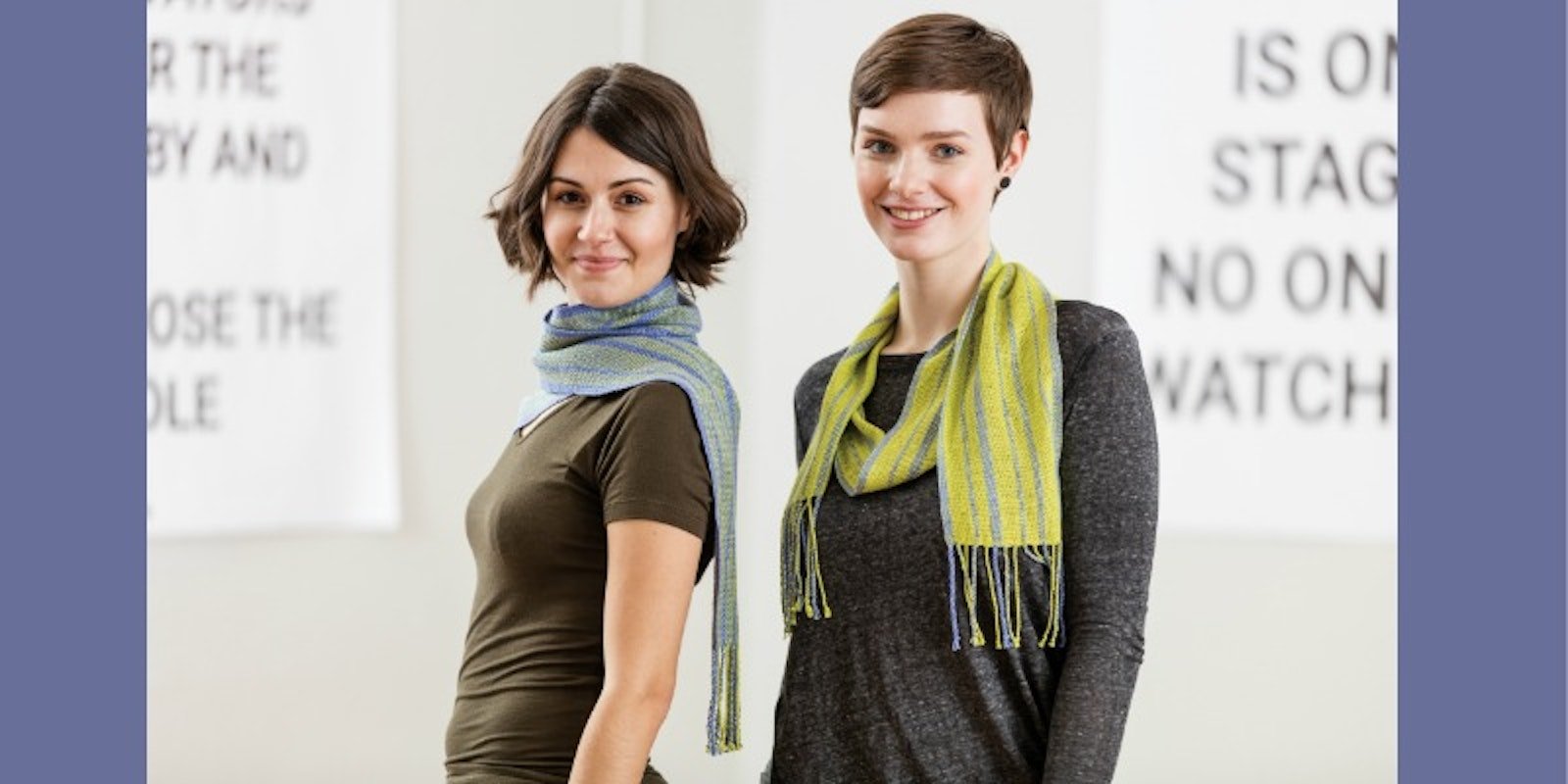Post sponsored by Treenway Silks
I remember the first time I understood the big deal about silk. I was probably in middle school and browsing the clothes at a local thrift shop. My hand brushed against a silk blouse and while I cannot tell you what it looked like, I remember how it felt. It was so light, so soft, and cool to the touch—I had to have it. I adored that blouse and have had a love affair with silk ever since, both in my wardrobe and on my loom.
Why do I love weaving silk so much?
I first fell in love with the feel of it. It’s so soft and, well, silky. There’s also that hint of a crunch when you squeeze the cloth or yarn—I love it! Then, of course, there’s the practicality of silk. Hear me out! Silk has a bad rep for being delicate. It is a very fine fabric, but it’s also very strong which makes it a great fiber to weave with. I also like to think of it as a fiber for all seasons: it stays nice and cool in the summer and keeps you warm in the winter. What’s not to love?
As a weaver it’s hard not to love silk, although there are too many people who seem to think silk can only be woven on a multishaft loom. I’m happy to say this is not at all true! You might have trouble if you try to weave with a 60/2 silk on your rigid-heddle loom, but with the right silk at the right sett you can make something wonderful.

Treenway
This is why when planning the 2017 issue of Easy Weaving with Little Looms I wanted to make sure we featured a project woven out of 100% silk. Lucky for me I was able to get Margaret MacMorris to design a set of wonderful scarves woven using Treenway Silk’s Zola and Jorie II silks yarns. Her Fibonacci Sequence Scarves are simple and simply elegant. I love the asymmetrical warp stripes created using—you guessed it—the Fibonacci sequence and the bright, happy colors. The Jorie II is a worsted weight yarn that is made from five strands of
Treenway
Silks’ 20/2 silk and can easily be sett at 10 epi while the Zola is much finer. Combine the two of them in the warp and you get a scarf that has great texture and visual interest.It was important for me to get a silk project in Easy Weaving with Little Looms because rigid-heddle looms lend themselves perfectly to silk. How so you ask?
1. Waste less, weave more
One of the most obvious reason that silk is better woven on the rigid-heddle loom is that there’s less loom waste. If you plan a scarf or shawl with decent sized fringe you’ll end up with even less yarn on your floor. For Margaret’s project she was able to get a pair of gorgeous scarves woven from just two skeins of yarn. Perfect!
2. Better warping
Worried about warping silk? Don’t be! Warping silk on a rigid-heddle loom is a snap. Unlike on a floor loom you don’t have to worry about tying the silk in bundles as you first sley the reed and then thread the heddles. Because you’re probably threading on a table you can rest assured that once you pull your silk yarn through the slot or hole it won’t slip or slide out of place so long as you pull it out enough. If you’re direct warping there are no worries at all!
3. Hands on
One of the best parts about working with silk is getting to enjoy the way it feels as you weave. Because rigid-heddle looms are so much better for hand-manipulated weaving techniques you can spend more time working directly with the silk.
Weaving with silk is absolutely a wonderful experience—perhaps the only thing better is wearing silk—and if you’re looking for an excellent silk project definitely check out the Fibonacci Sequence Scarves from Easy Weaving with Little Looms and Treenway Silks. I think you’ll love it.
Happy Weaving! Christina

